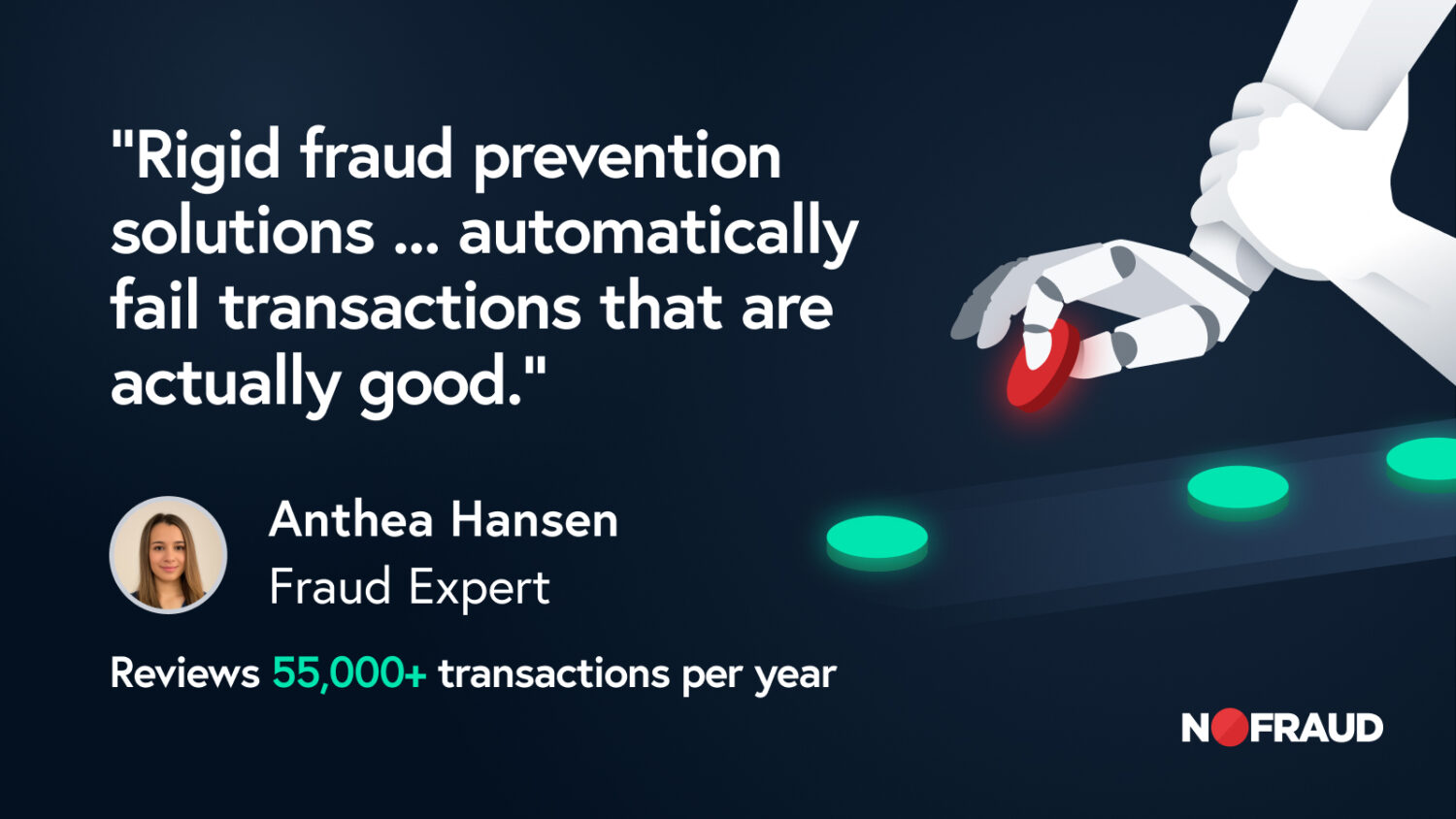Battling eCommerce credit card fraud can be an incredibly time consuming, often frustrating, endeavor. Many companies have dedicated staff or entire fraud departments focused on reducing fraud. Often, the cost of running a fraud-prevention campaign can be more costly than the losses incurred by fraud. A successful anti-fraud solution targets the cost of fraud rather than fraud itself.
To calculate the true cost of fraud, all the contributors warrant consideration. The easiest one to assess is chargebacks, the value of stolen merchandise. Equally costly, however, is revenue lost due to false positives. Commonly, the severity of said loss is curbed by merchants arduously manually reviewing copious transaction. Thus, merchant time and energy spent on reviewing transactions, in addition to overall campaign maintenance, contributes greatly to a merchant’s cost of fraud. Lastly, the cost of purchasing or subscribing to anti-fraud software and/or fraud insurance is an integral part of a merchant’s true cost of fraud.
At the recent MRC convention in Las Vegas I took every opportunity to speak to eCommerce merchants about their fraud experiences and challenges. Listening to their accounts took me back a few years to 2009, where I had been confronted with an inordinate amount of fraud targeting A4C, the retail arm of an electronics wholesaler and reverse logistic company I had launched. The task of manually reviewing orders, setting risk thresholds, re-adjusting said thresholds on a nearly weekly basis, and the constant necessity of adding and removing rules all served to propel my search for a better fraud prevention solution. The merchants I encountered all shared a similar desire, to discover technology that would reduce or eliminate the need for manual review.
There are many fraud prevention techniques and technologies available, each with a benefit. It is relatively simple to identify the obviously legitimate or fraudulent transactions. The challenge lies in minimizing the amount of transactions that land in the grey area (which often comprises the list of transactions that will be reviewed manually). Every layer of technology added to identify fraud, acts as a new perspective, which when utilized correctly will assist in minimizing the grey area.
Many gateways allow eCommerce merchants to set up some basic rules to block transactions that may be fraudulent, such as when there is an AVS/CVV mismatch. However, important data provided by the gateway or processor can be extremely challenging to leverage. Hence, in most cases they are either completely disregarded or configured to decline in the gateway whenever they are not a match. Either one of those options are flawed, either by being too strict and declining many legitimate customers or too lenient and taking more risk than necessary.
Many eCommerce merchants will add another layer of protection by having employees review purchases over a certain dollar amount. However, the typical eCommerce merchant does not have access to technology such as IP Tracking, Device Fingerprinting, Proxy Piercing, or Global Black Lists. Each of these technologies would add another layer of fraud prevention. A merchant can manually access these technologies, but it is costly in terms of employee time and error.
Another fraud prevention option is fraud Insurance. Insurers will review transactions, block transactions with a high suspicion of fraud and insure the company against fraudulent transactions. But insurance is very expensive and the false positive rate is often higher as the company protects itself against paying out insurance claims and veers heavily on the side of caution.
An effective fraud prevention solution layers multiple technologies and analyzes every piece of data from varied databases and sources. Generally, the more technology and data one can collect, the more effective the campaign, and the less manual review required. Unfortunately, many such solutions are geared for large enterprises, are incredibly expensive, and take time and resources to integrate. They also require a high level of risk and fraud expertise to manage and maintain to be continually effective. Such solutions are not in the reach of many companies and are often not cost effective.
I believe that a fraud prevention system should be intelligent, capable of determining the difference between a typo and a fraudulent attempt. The system should be agile and aware of every new fraud development so that it could adapt as quickly as fraud changed. It should be easy to use and even quicker to run, so as not to slow down a purchase. But most importantly, a fraud prevention solution should be affordable and cost-effective.
After much effort and collaboration, I co-founded NoFraud, a full-service, decision oriented fraud prevention solution that frees merchants entirely from the difficult and expensive task of fighting fraud. NoFraud’s primary objective is to reduce, even eliminate, every contributor to our customers’ true cost of fraud. We work as hard to legitimize an order as we do to block a fraudulent one.
NoFraud is positioned between the merchant’s shopping cart and gateway. Fraudulent transactions are declined while still in the merchant’s cart or on the checkout page, so customers have a chance to correct errors before being declined. Our technology makes decisions within milliseconds, never affecting the shopper’s experience. Our algorithm learns from fraudulent behaviors across its customer base so that all merchants benefit when new fraud trends are detected. The team also monitors declined transactions to ensure that our software isn’t blocking any legitimate transactions. Best of all, we have no monthly minimums or long-term contracts. Our solution integrates within minutes and can be tried risk-free.
Finally, there is an affordable and effective fraud prevention solution.
Originally published in the Payments and cards Network Magazine: Read the whole article here. Written By: Shaya Posner.






